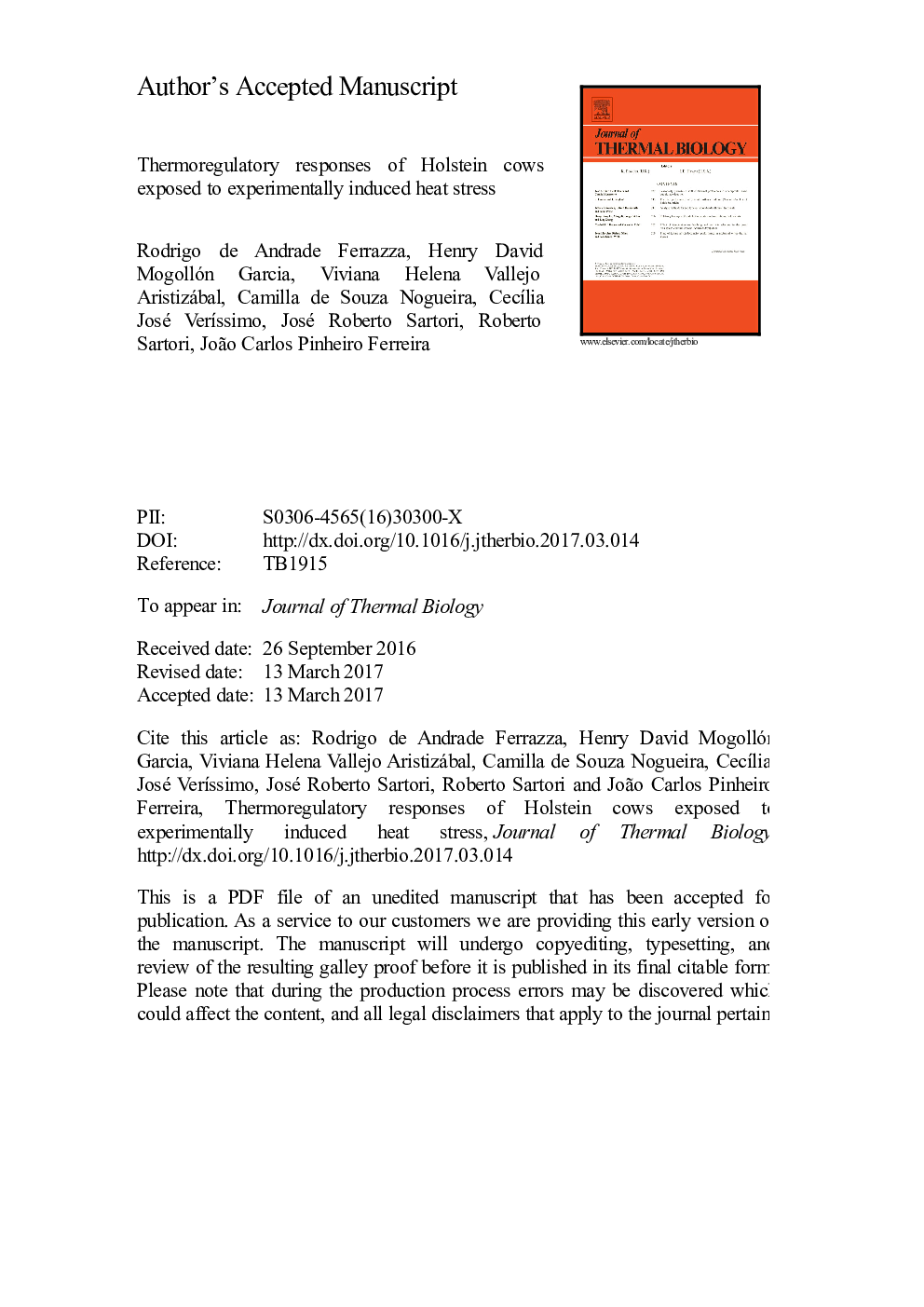| Article ID | Journal | Published Year | Pages | File Type |
|---|---|---|---|---|
| 5593515 | Journal of Thermal Biology | 2017 | 50 Pages |
Abstract
Heat stress (HS) adversely influences productivity and welfare of dairy cattle. We hypothesized that the thermoregulatory mechanisms vary depending on the exposure time to HS, with a cumulative effect on the adaptive responses and thermal strain of the cow. To identify the effect of HS on adaptive thermoregulatory mechanisms and predictors of caloric balance, Holstein cows were housed in climate chambers and randomly distributed into thermoneutral (TN; n=12) or HS (n=12) treatments for 16 days. Vaginal temperature (VT), rectal temperature (Tre), respiratory rate (RR), heart rate (HR), and dry matter intake (DMI) were measured. The temperature and humidity under TN were 25.9±0.2 °C and 73.0±0.8%, respectively, and under HS were 36.3±0.3 °C and 60.9±0.9%, respectively. The RR of the HS cows increased immediately after exposure to heat and was higher (76.02±1.70bpm, p<0.001) than in the TN (39.70±0.71bpm). An increase in Tre (39.87±0.07 °C in the HS vs. 38.56±0.03 °C in the TN, p<0.001) and in VT (39.82±0.10 °C in the HS vs. 38.26±0.03 °C in the TN, p<0.001) followed the increase in RR. A decrease (p<0.05) in HR occurred in the HS (62.13±0.99bpm) compared with the TN (66.23±0.79bpm); however, the magnitude of the differences was not the same over time. The DMI was lower in HS cows from the third day (8.27±0.33 kg dâ1 in the HS vs. 14.03±0.29 kg dâ1 in the TN, p<0.001), and the reduction of DMI was strongly affected (r=â0.65) by changes in the temperature humidity index. The effect of environmental variables from the previous day on physiological parameters and DMI was more important than the immediate effect, and ambient temperature represented the most determinant factor for heat exchange. The difference in the responses to acute and chronic exposure to HS suggests an adaptive response. Thus, intense thermal stress strongly influence thermoregulatory mechanisms and the acclimation process depend critically on heat exposure time.
Related Topics
Life Sciences
Agricultural and Biological Sciences
Agricultural and Biological Sciences (General)
Authors
Rodrigo de Andrade Ferrazza, Henry David Mogollón Garcia, Viviana Helena Vallejo Aristizábal, Camilla de Souza Nogueira, CecÃlia José VerÃssimo, José Roberto Sartori, Roberto Sartori, João Carlos Pinheiro Ferreira,
